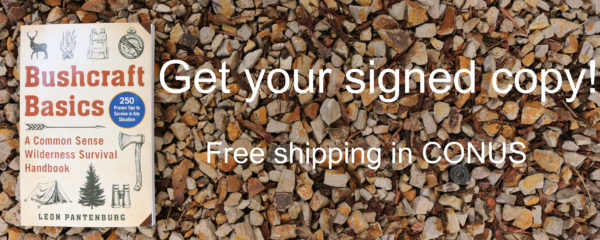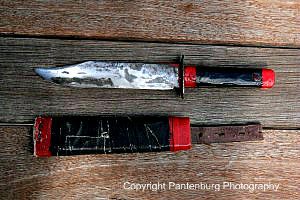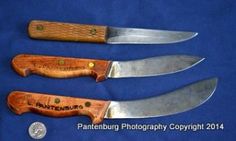
A few of the most beneficial camping, survival and meat-cutting knives do not included sheaths. Here’s how to make a quick, safe edge guard/sheath out of a cardboard roll and duct tape.
by Leon Pantenburg
My knives are working tools, and the ones used in the kitchen regularly get double duty on camping journeys or for meat processing. Some of these knives began in a business flatware catalog, were sold at a butcher supply shop or were bargains at a gun show.
One remarkable rating was at a weapon show, when a vendor was offering used boning knives for about $3 each. I purchased a number of, and reshaped the blades to different lengths so I might explore the very best length. (Turns out, I like a five-inch finest!)
My finest flatware offer came from a butcher supply store in Nampa, Idaho. On an impulse, I dropped in to look around, and found new, six-inch butcher knives being sold for $2 each. The manages were wood, and had recently been forbidden by the health department. I bought a dozen, (and still regret not purchasing another dozen!) and provided them to my searching friends. Many of those knives ended up in hunting camp using the cardboard tube/duct tape sheaths!
A prepper and/or survivalist can see the advantage of a knife that is functional for a variety of outside tasks. So suppose you get a good deal on a one-piece knife and want to take it to hunting camp. For security sake, that blade needs to be firmly covered.
Here’s how to make a quick, safe sheath that will last up until you develop a permanent replacement.
None of these knives included a sheath. Materials required are the cardboard tube from inside a roll of paper towels; duct tape, a six-to-eight-inch piece of paracord and a piece of leather or webbing for a belt loop.
Here’s what you do:
- Measure the blade length versus television, and make sure that every part of the sharp edge will be covered.
- Flatten television under a pile of books or something heavy, up until the cardboard stays semi-flat. Then, take a piece of duct tape and tape across one end, to assist hold the shape.
- Wrap the length of the tube when with duct tape.
- Double over the webbing or leather to form a belt loop, then tape it securely to the back of television.
- Wrap the sheath with duct tape once again to secure the belt loop. (I carry duct tape on my knife sheaths anyway, so place on a few extra feet!)
- Take the paracord, run it through the belt loop and use it as a security tie for the handle.
Of course, you might constantly buy a knife blade protector, but preppers and survivalist-types tend to be hardcore recyclers and do-it-yourselfers. Besides, the cardboard tube project takes so little time and is so cheap, you can soon make a sheath for all your knives!

< img src ="https://survivalcommonsense.com/wp-content/uploads/2016/09/10-Leons-knife-cardboard-sheath-008-300×200-300×200.jpg"alt= "I made this knife and cardboard sheath 40-some years earlier.
The blade is rather functional and the sheath still does its job quite well! It does not work all that well for small video game cleaning.”width= “300”height= “200”/ > I made this knife and cardboard sheath 50 years back. My practice is to watch out at weapon shows, and purchase any leather sheaths that may fit something I own. Over the years, all but among my hasty sheaths has been changed with solid, well-fitting leather or nylon sheaths.
My finest score because location was when I bought a leather Bowie knife sheath for a number of dollars. One of my elk hunting partners, Phil Walker, carries a genuine Bowie knife elk hunting, and his knife provider revealed the wear and difficult usage. That scavenged sheath fit his knife like it was made to purchase.
One knife I own, though will never ever have a sheath replacement. I made my very first knife as a 14-year-old, grinding the blade to shape on an antique pedal-powered mill. The manage is made from wood. Lacking the right leather at the time, the sheath was made of cardboard and tape. I used the same strategy as pointed out above, other than an old leather belt was used for the loop. I constantly intended to make a real sheath out of leather, however never navigated to it.
That knife was carried for several years in that cardboard sheath, and it worked simply great. So, I guess there is probably no factor to replace it now!
Please click here to have a look at and subscribe to the SurvivalCommonSense.com YouTube channel– thanks!
For more details about survival and backcountry knives, click here!



